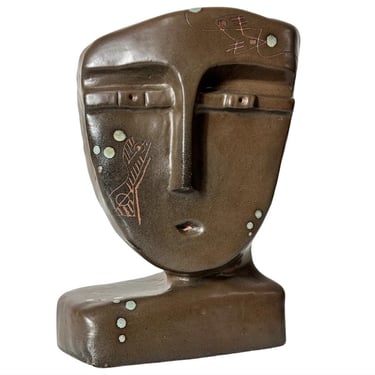
Abstract Ceramic Bust Sculpture with Cubist Face by Marianna Von Allesch circa 1940s

Modernist bust sculpture by German American artist Marianna Von Allesch circa 1940s Hand sculpted organic form with cubist face decorated in abstract applied glaze and ...
$$$$$ · Indexed August 8, 2024 · Source
etsy.com
Content may be subject to copyright. Terms of Use
20c Modern
Royal Oak, MI
Still looking? Try a search.
